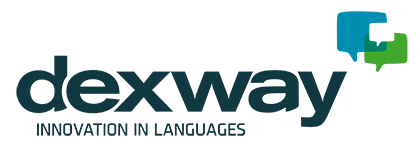The first public library was opened in Boston, Massachusetts in the 1700s to provide citizens free access to books and journals that would otherwise be too expensive or difficult for them to get. Since then, patrons have relied on the public library system to provide them with learning resources such as books, journals, reports, archives, etc. Public libraries are a hub for knowledge that spans from language learning to ancient history to modern art and patrons of the community see it as such.
As a result, public libraries strive not only to be spaces for researching subjects of interest to their patrons but to offer options that let users learn new skills, whether they’re physically in the library or not. One way they offer this is through language learning software available in multiple languages and for all patrons to benefit from. Many eLearning providers offer programs through libraries that patrons can use in the building, at home, or even while waiting in line for a cup of coffee.

But why should libraries invest in language learning software?
# 1 Language Learning in Public Libraries is Cost-Effective
Public libraries are funded by federal and state government bodies, which mean they are subject to strict funding and budgeting rules. Language learning software is the perfect way for library systems to stay in budget because they are upwards of 50% more cost-effective than in-person language learning courses. Libraries can pay for licenses that last years and can accommodate an unlimited amount of students over that course period.
# 2 Public Library Language Learning is Flexible and Accessible
Learning is transforming even in regular schools so public libraries must stay current with new learning methods and technological advances to keep patrons learning and satisfied. Language learning software for public libraries is the solution to that problem. Almost all software is responsive and available across different devices so patrons can begin their language courses in the library, continue it while they are in the metro on the way home, and finish at home for the day. This flexible learning method is very attractive to patrons who don’t have much time available and would otherwise not be able to partake in language training. Some eLearning providers even offer language courses available with little or no internet connection so patrons in geographical areas where the internet is weak can still attend computer based language courses.
# 3 Patrons of Public Libraries Want to Learn New Skills
Public libraries were so revered they were once popular teen hang out spots where they would get together with friends. But over the years, the libraries have lost their immediate charm and most patrons go in order to learn new skills from resources they would not have access to at home or outside of the library.
Language training software can be expensive if purchased by itself for personal use and learners may choose not to buy it because of that reason. But public libraries receive funding help from the government and can purchase course licenses in bulk, making them cheaper. When the libraries pass these resources down to the patrons for free, they are supplying them with material and courses they find real value in and can learn from.
# 4 Self-guided, No Instructor Needed
The best part about language software for libraries is that it is self-guided, easy-to-use, and does not require an instructor. Patrons can register, login, and complete language courses on their own, improving engagement and interactive, which then leads to a more successful language development. The most advanced language software, such as Dexway Language Innovation’s software, allows beginners to have course help and activity explanations in the learner’s native language. For example, an ESL student, whose native language is Spanish, can get grammar and vocabulary explanations for the course in Spanish.
# 5 Language Learning in Public Libraries Brings the Community Together
The modern world is a transient place and different, multicultural groups of people are now settling in the same community together – many speaking different languages from one another. Most of these citizens are also patrons of the public libraries in their communities. Learning a common language for the area they live in opens up a channel of communication and brings everyone within a community together.
The public libraries of the United States are transforming from outdated resource centers to interactive and engaging learning hubs where patrons can come and learn a new skill. Language developing and training software is a highly sought after commodity amongst most library patrons; they want a resource that they would otherwise not have access to if it weren’t for the library. Most libraries offering language training software have already seen an increase in new and returning patrons and because of this, the U.S. government sees more necessity to increase funding for public library programs.
Dexway Language Innovation offers top of the line language learning software for public libraries. Click here to find out more!
